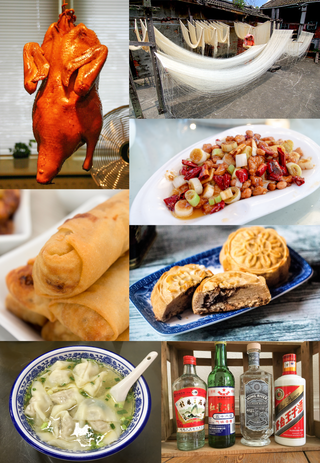
Chinese cuisine comprises cuisines originating from China, as well as from Chinese people from other parts of the world. Because of the Chinese diaspora and historical power of the country, Chinese cuisine has profoundly influenced many other cuisines in Asia and beyond, with modifications made to cater to local palates. Chinese food staples such as rice, soy sauce, noodles, tea, chili oil, and tofu, and utensils such as chopsticks and the wok, can now be found worldwide.

A cuisine is a style of cooking characterized by distinctive ingredients, techniques and dishes, and usually associated with a specific culture or geographic region. Regional food preparation techniques, customs, and ingredients combine to enable dishes unique to a region.

Japanese cuisine encompasses the regional and traditional foods of Japan, which have developed through centuries of political, economic, and social changes. The traditional cuisine of Japan is based on rice with miso soup and other dishes with an emphasis on seasonal ingredients. Side dishes often consist of fish, pickled vegetables, and vegetables cooked in broth. Common seafood is often grilled, but it is also sometimes served raw as sashimi or as sushi. Seafood and vegetables are also deep-fried in a light batter, as tempura. Apart from rice, a staple includes noodles, such as soba and udon. Japan also has many simmered dishes, such as fish products in broth called oden, or beef in sukiyaki and nikujaga.
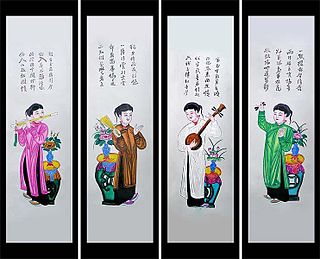
Vietnamese cuisine encompasses the foods and beverages originated from Vietnam. Meals feature a combination of five fundamental tastes : sweet, salty, bitter, sour, and spicy. The distinctive nature of each dish reflects one or more elements, which are also based around a five-pronged philosophy. Vietnamese recipes use ingredients like lemongrass, ginger, mint, Vietnamese mint, long coriander, Saigon cinnamon, bird's eye chili, lime, and Thai basil leaves. Traditional Vietnamese cooking has often been characterised as using fresh ingredients, not using much dairy or oil, having interesting textures, and making use of herbs and vegetables. The cuisine is also low in sugar and is almost always naturally gluten-free, as many of the dishes are rice-based instead of wheat-based, made with rice noodles, papers and flour.
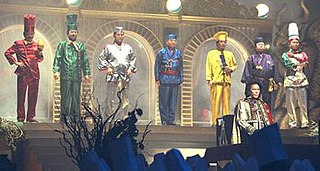
Iron Chef is a Japanese television cooking show produced by Fuji Television. The series, which premiered on October 10, 1993, was a stylized cook-off featuring guest chefs challenging one of the show's resident "Iron Chefs" in a timed cooking battle built around a specific theme ingredient. The series ended on September 24, 1999, although four occasional specials were produced from January 5, 2000, to January 2, 2002. The series aired 309 episodes. Repeats are regularly aired on the Food Network in Canada, the Cooking Channel in the United States, and on Special Broadcasting Service in Australia. Iron Chef can be viewed on Peacock TV and streamed for free on Pluto TV in the United States. There are 5 spinoffs, with the latest being Iron Chef: Quest for an Iron Legend.

Takoyaki is a ball-shaped Japanese snack made of a wheat flour-based batter and cooked in a special molded pan. It is typically filled with minced or diced octopus (tako), tempura scraps (tenkasu), pickled ginger, and green onion (negi). The balls are brushed with takoyaki sauce and mayonnaise, and then sprinkled with green laver (aonori) and shavings of dried bonito (katsuobushi).

Sukiyaki is a Japanese dish that is prepared and served in the nabemono style.

Little Tokyo, also known as Little Tokyo Historic District, is an ethnically Japanese American district in downtown Los Angeles and the heart of the largest Japanese-American population in North America. It is the largest and most populous of only three official Japantowns in the United States, all of which are in California. Founded around the beginning of the 20th century, the area, sometimes called Lil' Tokyo, J-Town, Shō-Tōkyō (小東京), is the cultural center for Japanese Americans in Southern California. It was declared a National Historic Landmark District in 1995.

A beer festival is an event at which a variety of beers are available for purchase. There may be a theme, for instance beers from a particular area, or a particular brewing style such as winter ales.
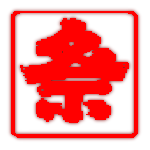
Nisei Week is an annual festival celebrating Japanese American (JA) culture and history in Little Tokyo, Los Angeles. Nisei means 2nd generation in Japanese, describing the first American born Japanese, a group which the seven-day festival was originally meant to attract. Though named for the Nisei generation, Nisei Week is no longer targeted at Niseis, nor is the festival still contained within a week. Nisei Week Foundation president for 2006, Michelle Suzuki, described the festival as "the opportunity for people of all backgrounds to celebrate Japanese heritage and culture".
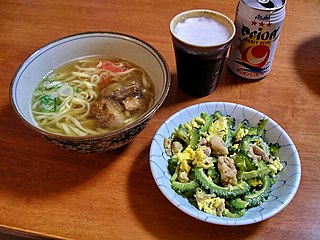
Okinawan cuisine is the cuisine of the Okinawa Prefecture of Japan. The cuisine is also known as Ryūkyūan cuisine, a reference to the Ryukyu Kingdom. Due to differences in culture, historical contact between other regions, climate, vegetables and other ingredients, Okinawan cuisine differs from mainland Japanese cuisine.

Odori Park is a park located in the heart of Sapporo, Hokkaido, Japan. Ōdōri (大通) means "large street" in Japanese. It stretches east to west through Nishi 1 chōme, Ōdōri to Nishi 12 chōme, Ōdōri, and divides the city into north and south sections. Odori Park spans about 1.5 km and covers 78,901 m². During the urban planning of Sapporo, it was originally designated as the main street but it eventually became a park. Throughout the year, many events and ceremonies such as the Sapporo Lilac Festival and the Sapporo Snow Festival are held in the park, and local landmarks including the Sapporo TV Tower and the Sapporo City Archive Museum are located within its boundaries.

Tofu is a food prepared by coagulating soy milk and then pressing the resulting curds into solid white blocks of varying softness: silken, soft, firm, extra firm. Tofu is also known as bean curd in English. It is a traditional component of East Asian and Southeast Asian cuisines that has also been consumed in China for over 2,000 years. In modern Western cooking, it is sometimes used as a meat substitute.
The following outline is provided as an overview of and topical guide to festivals:

Mapo tofu is a popular Chinese dish from Sichuan province. It consists of tofu set in a spicy sauce, typically a thin, oily, and bright red suspension, based on douban, and douchi, along with minced meat, traditionally beef. Variations exist with other ingredients such as water chestnuts, onions, other vegetables, or wood ear fungus. One account indicates that the dish existed as early as 1254, in a suburb of Chengdu, the capital city of Sichuan. Other accounts indicate it originated at a Chengdu restaurant in the 1860s.

The Disney California Adventure Food & Wine Festival is a food and drink festival that takes place each spring in Disney California Adventure in the Disneyland Resort in Anaheim, California. The festival includes a number of themed kiosks, each featuring food and beverages from a particular aspect of California cuisine. Other offerings include wine and beer tastings, seminars, and cooking demonstrations. This event was inspired by the similar but much larger Epcot International Food & Wine Festival.
Cold Tofu, also known as Cold Tofu Improv, is a non-profit organization and Asian American improvisation and comedy group based in Los Angeles.

North Korean cuisine is the traditional culinary practices and dishes of North Korea. Its foundations are laid by the agricultural and nomadic traditions in southern Manchuria and the Korean Peninsula. Some dishes are shared by the two Koreas; however, availability and quality of Northern cuisine is much more significantly affected by sociopolitical class divides.


















